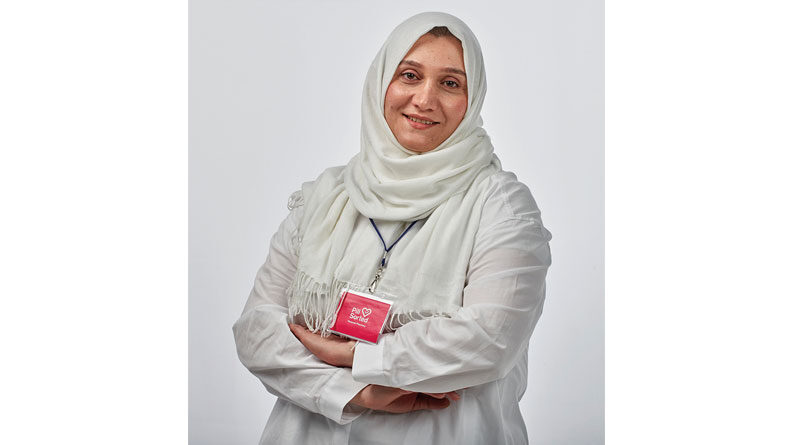Integrated Medication Services Across Care Settings Are Key to a Better, Safer Patient Experience
By Zeinab Ardeshir, a pharmacist with 17 years of experience and co-founder of personalised pharmacy provider PillSorted (www.pillsorted.com)
The way we prescribe medication in the UK lacks consensus. Involving a medley of paper-based and electronic processes, in-hospital and primary care prescribing currently relies on extensive oversight (and time) to avoid safety concerns.
It’s a system hampered by a raft of communication barriers, creating problems and delays – to the detriment of the patient experience.
Manual processes hinder full intergration
Patient care pathways are complex, spanning hospitals, general practices, residential homes, and the community. Inadequate communication between these settings often leaves patients chasing their own medication, running the risk of serious errors.
The NHS needs to solve this challenge through greater digitalisation, and one excellent way to improve the safety of medication management is to introduce a fully digital – or even automated – system for managing patients’ pharmacological needs.
EPS has the potential to transform repeat dispensing
The roll-out of the Electronic Prescription Service (EPS) has improved accountability for safe prescribing in primary care settings. It promotes visibility about the prescriber and nominated pharmacy and provides an opportunity for patients to choose the most convenient way to access their medication.
Thousands of pharmacies and GPs are already connected to the EPS system. At the click of a button, prescriptions are sent instantly, saving the healthcare service time and money (not to mention the ecological benefit of fewer paper prescriptions).
In particular, many patients take ongoing medication, such as those to treat chronic conditions like hypertension. These are generally reviewed annually by a GP, but regular repeat prescriptions are needed more frequently.
Electronic Repeat Dispensing allows GPs to administer monthly prescriptions for up to 12 months. These are stored securely on the NHS database and dispensed as directed, without the need for patients to request repeats from prescribers.
However, while EPS has significantly reduced the administrative burden on GPs, freeing up time for seeing patients, its uptake is currently variable (and often very low) across different areas of the country.
Connecting hospitals to primary care
Another recent initiative to solve recurring communications challenges across the NHS was the introduction of The Discharge Medicines Service in 2021, which facilitates clear communication of in-hospital medication changes to a patient’s primary care providers. A discharge summary is delivered to the community pharmacist, ensuring modifications propagate through future prescriptions.
The result is safe dispensing of medication (the medicines stopped or altered are clearly communicated) and a smooth transition back to the community – particularly for elderly or vulnerable patients who can’t chase up missing medications.
However, despite its merits, communication is largely one-way: there is little scope for pharmacists to contribute to in-hospital care.
The current system also depends upon Summary Care Records – generated by GPs – which contain information about a patient’s current medications and allergies. These can be accessed by other healthcare providers, including hospitals and pharmacies. But while they’re an excellent resource, they have potential gaps arising from failure to automatically incorporate inputs from other sources – for example, prescriptions from in-hospital specialists, or food supplements given to care home residents by a dietician.
Pharmacies working with residents and care homes
With vulnerable populations such as care home residents, health and medication problems can escalate quickly, especially when exacerbated by poor communication between care providers and carer knowledge gaps.
Historically, care homes received regular Medicine Management Reviews, where a pharmacist evaluated the storage, handling, and administration of controlled drugs and other medications – ensuring CQC standards were met in all homes. The current Covid-19 pandemic acutely highlighted the lack of support in the event a resident needed urgent input and raised the question of how we can improve access to help going forwards.
Solutions for a fully integgrated experiance
Good communication solves many problems: improving the care of our patients is no exception.
By eliminating manual processes and replacing them with a fully digital EPS (that incorporates electronic Repeat Dispensing in 100% of CCGs) we can reduce the burden on GP’s time and lower the risk of missed medication. Furthermore, by using the Discharge Medicines Service to create a robust dialogue between hospital teams and pharmacies at the very start of a hospital stay – rather than the end – we can improve discharge efficiency and reduce the possibility of medication errors occurring.
Distinct pathways for acute and regular prescriptions would streamline access to urgent medications while affording an opportunity to optimise stock levels and accurate administration records for repeat prescriptions – all managed using the electronic Repeat Dispensing Service. Similar to an out-of-hours doctor, acute prescribers could hold an inventory of common items to dispense on the spot (negating the inconvenience of having to locate an open pharmacy with a paper prescription) and create an immediate digital record of each prescription.
Alongside this, reinstating regular physical and virtual visits across care homes would empower care home managers and carers in the safe handling of medication, and provide a forum for raising concerns – extinguishing potential problems before they escalate into an emergency.
Looking to the future, we have myriad opportunities to reinforce communication between pharmacies, hospitals, GPs, and care homes.
Promoting patient well-being is the very essence of people-centric care. We must use technology to integrate prescriptions and dispensing to guarantee dependable services for patients. By continuing to build an integrated, digitised network of hospitals, general practices, care homes, and pharmacies around our patients, with the goal of developing a holistic approach to medication management, we can provide reliable and safe access to medications – improving their experience and alleviating pressure on a stretched NHS.

